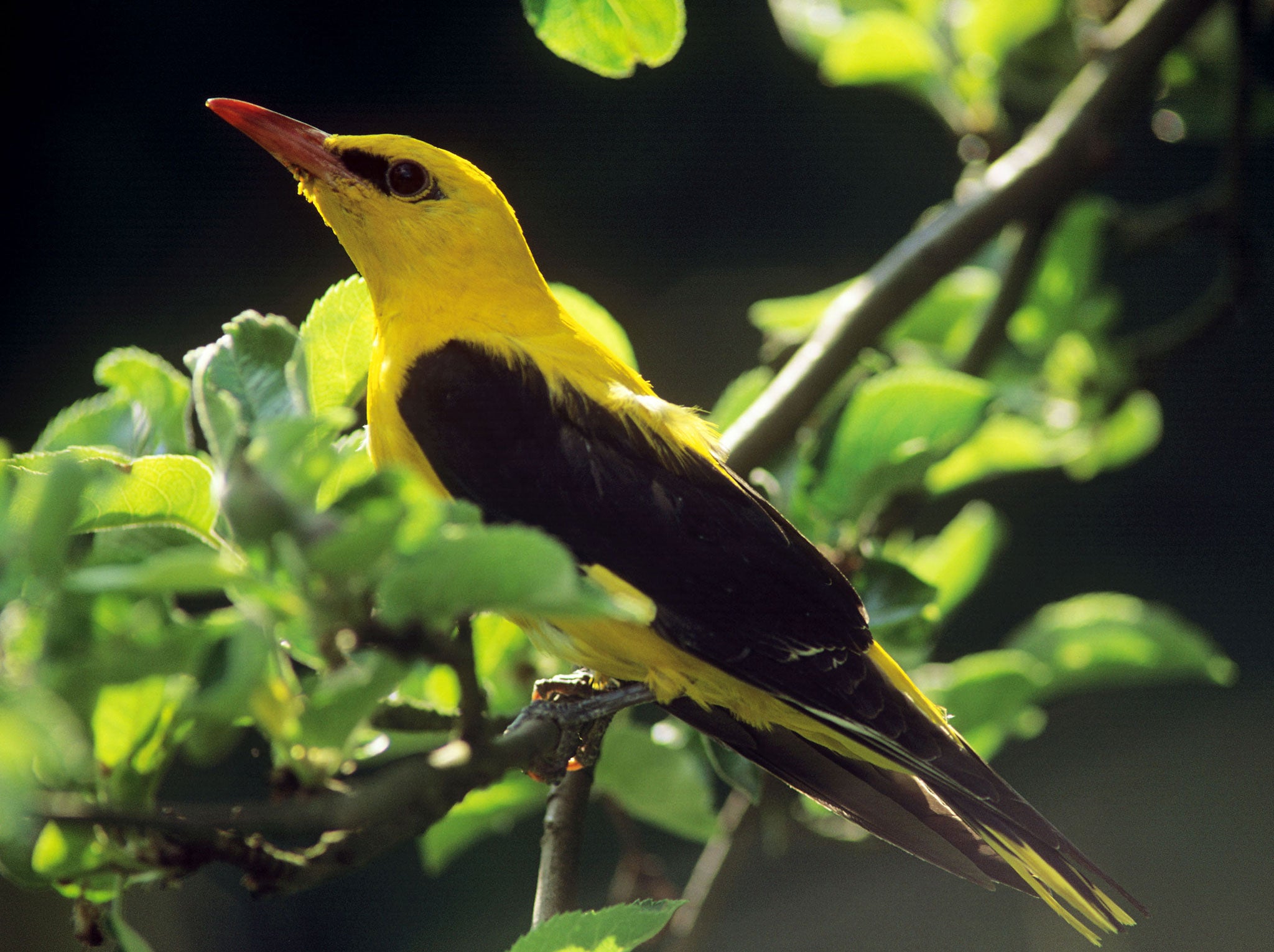Nature Studies: Beautiful, bright, and on the way out, an elegy for the golden oriole
There is one recent bird immigrant which once seemed on the point of lighting up our springtime, but is sadly now on the point of disappearing completely

Immigrants tend to put down roots, be they humans or other creatures: that seems almost a universal law of life. The Angles and the Saxons are still here, 1500 years after splashing ashore, and non-human arrivals are similarly long-stayers, such as the rabbit and the fallow deer, both thought to have come over with the Romans.
More recently, there have been a number of notable bird immigrants which came, liked what they saw, and stuck around. The elegantly pretty collared dove, now ubiquitous, first bred in Britain in 1955, having spread right across Europe from Turkey in just 30 years, while the little egret, such a graceful snow-white addition to our water birds, doubled its numbers every year after setting up home on Brownsea Island in 1996, and is now abundant.
But there has been one relatively recent bird immigrant which has bucked the trend and not put down solid roots, and which, though it once seemed to be on the point of lighting up our springtime, is sadly now on the point of disappearing completely. I say sadly because this is the loveliest of them, up there with the kingfisher as the most resplendent bird you will encounter in the British Isles; some would say, the most resplendent of all.
It’s the golden oriole. A glimpse of it will stop you in your tracks. The male is brilliant banana-yellow, with jet black wings and tail, a colour combination tropical in its luxuriance, far removed from the brown paper of so many of our temperate-zone songbirds: it is drop-dead gorgeous, like something from the jungle – the female, too, is charming, but of a soft green – and its admirers are extravagant in their praise. “The golden oriole,” write the authors of the British monograph on the species, Paul Mason and Jake Allsop, “… is the most frustrating, intelligent, beautiful, characterful, acrobatic, brave, diverse, successful and exciting arboreal passerine there is.”
Simpler but no less heartfelt admiration comes from Father Christmas; at least, from the Father Christmas portrayed in the picture books of Raymond Briggs, he whose story of The Snowman has gone round the world. Briggs’s Yuletide gift-giver is depicted as an ageing, grumpy-but-warm-hearted bachelor from Yorkshire or somewhere similar, and at one stage he goes on holiday to France, having converted his sled temporarily into a caravan (though still pulled by reindeer). Among his pastimes, he goes birdwatching, and almost immediately catches sight of a golden oriole through his binoculars, exclaiming: “Blooming marvellous!”
Yes, indeed. I know the feeling; I, too, have seen the bird in France, though not in Britain. For our golden orioles have been a secretive, isolated bunch: they arrived in the mid-1960s after Bryant and May, the giant producer of matches, planted a forest of black poplar trees in the East Anglian fens (poplar wood being ideal for matchsticks). For some reason, this peculiar woodland was oriole-friendly to a degree, and by the 1980s the birds in the area numbered as many as 30 pairs, and looked set to spread their tropical brilliance across the land.
But then a decline set in (speeded up by Bryant and May’s cutting down of most of the poplars), a decline whose causes are not known, but which has been irreversible and, in 2010, for the first time in nearly 40 years, there were no confirmed breeding records (although odd birds continue to be spotted and heard, and breeding has been suspected).
This week, I went to look for myself. The three remaining pieces of the poplar plantation are now part of the RSPB reserve of Lakenheath Fen, an inspiring recreation of wetland from what barely 15 years ago were carrot fields. It’s a breathtakingly beautiful and exciting place: I saw seven hobbies, the most dashing of falcons, in the air at once, chasing dragonflies, while whitethroats and garden warblers were singing all around me, cuckoos were calling, and marsh harriers floated over the reedbeds; but of Oriolus oriolus, despite several hours’ watching and listening for its fluting call, there was no sign.
Individuals have been heard this year; but I doubt the bird will be in Britain much longer. It seems so sad to write its elegy, as just 30 years ago there was such hope that it would be a permanent and dazzling part of our avifauna. Blooming marvellous! Yes, indeed! But the golden oriole is now one gift even Father Christmas himself cannot bring us, no matter how devoutly it be wished.
Subscribe to Independent Premium to bookmark this article
Want to bookmark your favourite articles and stories to read or reference later? Start your Independent Premium subscription today.

Join our commenting forum
Join thought-provoking conversations, follow other Independent readers and see their replies